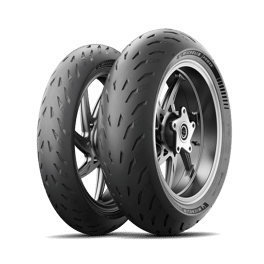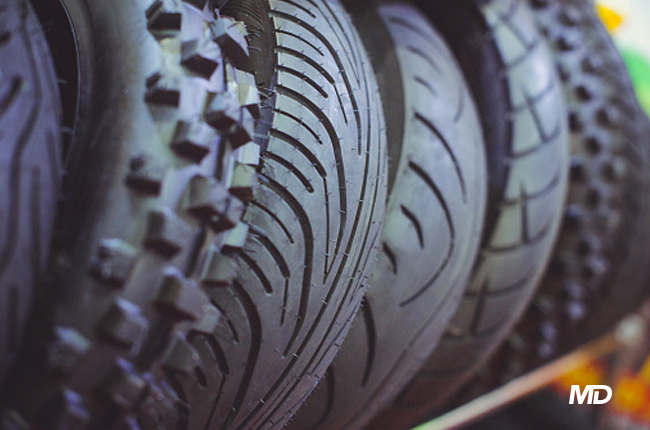Check out the Value of Picking the Right Tyres With Our Informative Motorcycle Tyre Overview
Selecting the appropriate tyres is essential for any Motorcycle lover. The right tires boost performance, improve safety, and contribute to total convenience during adventures. Understanding the various types, dimensions, and upkeep methods can significantly affect your riding experience. As motorcyclists face diverse surfaces and conditions, knowing just how to choose the most effective tires ends up being extremely important. What variables should be thought about to ensure peak efficiency? The responses await in the adhering to areas.
Recognizing Various Kinds of Motorcycle Tyres
Although picking the best sort of Motorcycle tyre might appear overwhelming, understanding the numerous choices offered can substantially enhance a motorcyclist's experience. Motorcycle tires are primarily categorized into 3 types: touring, off-road, and sporting activity. Touring tires are designed for long-distance travel, using toughness and comfort on freeways. These tyres include a tread pattern that provides exceptional grasp and security, making them appropriate for numerous weather conditions.Sport tyres, on the other hand, focus on efficiency and handling, featuring a softer rubber compound that improves grip during cornering. They are optimal for riders who delight in perky adventures on twisty roadways or racetracks. Off-road tyres are customized for tough surface, with a hostile step pattern that offers traction on loosened surfaces like dirt or gravel.
Evaluating Your Riding Style and Requirements
When assessing riding style and needs, recognizing exactly how different riding conditions influence performance is necessary. This evaluation can direct bikers in picking the appropriate tyre kinds that line up with their details needs. By taking into consideration aspects such as terrain and climate, cyclists can make enlightened decisions for perfect safety and experience.
Riding Problems Influence
As motorcyclists browse various terrains and weather, understanding exactly how these variables affect Motorcycle efficiency comes to be vital. Various riding atmospheres, such as wet, completely dry, or off-road, need particular tire features to ensure safety and excellent handling. For example, wet conditions require tires that provide better grip to avoid hydroplaning, while off-road riding demands robust tread patterns for traction on loosened surfaces. In addition, temperature variants can influence tyre stress and performance, calling for modifications based upon the conditions faced. Riders have to evaluate their normal paths and environments when choosing tires, as the ideal selection can considerably boost their riding experience, ensuring both convenience and safety in varied circumstances. Matching tires to riding conditions is crucial for reliable Motorcycle performance.
Tyre Types Summary
Recognizing the numerous types of Motorcycle tires is essential for riders intending to enhance their performance and security. Each tyre type accommodates particular riding styles and conditions. Sporting activity tires, made for high hold and dexterity, are suitable for hostile riding and track days. Touring tires prioritize durability and convenience, making them appropriate for long-distance trips. Off-road tyres include deeper treads for traction on uneven surfaces, appealing to experience seekers. Cruiser tyres supply a smooth adventure, frequently stressing aesthetic appeals for choppers and cruisers. Lastly, dual-sport tyres blend features of both on-road and off-road tires, offering functional cyclists. Examining individual riding designs and requires assurances that the right tire kind is picked, eventually enhancing overall riding experience and safety and security.
The Effect of Tyre Size on Performance
Tyre dimension considerably affects a bike's general efficiency, affecting traction, security, and handling. The diameter and width of tires can especially alter a bike's characteristics. Bigger diameter tires can boost high-speed efficiency, offering smoother adventures and improved security during straight-line traveling. They might also need even more effort for fast handling. Alternatively, narrower tyres tend to provide far better agility and responsiveness, making them perfect for limited edges and complex riding conditions.Additionally, the aspect ratio, which associates with the tire's height, plays an important function in performance features. A lower profile tyre might boost cornering stability however can jeopardize convenience as a result of minimized cushioning. Ultimately, choosing the appropriate tyre size lines up with the cyclist's choices and planned usage, whether for sporting activity, touring, or off-road riding. Recognizing these nuances guarantees peak performance and enhances the total riding experience.
Step Patterns and Their Significance
Step patterns on Motorcycle tyres play an essential function in determining efficiency, affecting elements such as grasp and handling. Various kinds of step designs satisfy various climate condition and terrains, ensuring suitable grip and stability. Recognizing these patterns is vital for cyclists looking for to improve their Motorcycle's efficiency and security.
Sorts Of Footstep Patterns
The efficiency of a bike is considerably influenced by the type of walk pattern on its tires. Various step patterns offer particular functions, dealing with different riding problems. Slick tyres feature a smooth surface area, ideal for dry conditions and auto racing, providing maximum hold. In comparison, tyres with deep grooves and intricate patterns are developed for damp or off-road problems, boosting water variation and traction. Some walk layouts, wikipedia reference such as dual-purpose tyres, strike a balance for both on-road and light off-road usage. motorcycle tyre guide. Furthermore, sporting activity tyres usually possess a more aggressive walk pattern, improving cornering stability. Recognizing these types of step patterns helps cyclists select the appropriate tyres for their intended riding experiences and environmental problems
Influence on Performance
Choosing the right walk pattern considerably affects a motorbike's performance in numerous riding problems. Walk patterns are created to enhance grip, dealing with, and security, straight affecting cornering ability and stopping performance. For circumstances, a much more aggressive step layout enhances grip on irregular surface areas, making it suitable for off-road riding. Alternatively, a slicker step pattern advertises smoother adventures on paved roads, decreasing moving resistance and improving gas performance. The depth and plan of grooves additionally play a vital role, enabling effective water displacement and reducing hydroplaning dangers. Inevitably, choosing an ideal walk pattern customized to certain riding designs and atmospheres warranties boosted control, security, and overall riding experience, highlighting the value of this decision for Motorcycle fanatics.
Weather and Surface Viability
Climate conditions and terrain types significantly influence the suitability of Motorcycle tyre tread patterns. In wet problems, tires with much deeper grooves and details patterns are crucial to direct water away and minimize the danger of aquaplaning. Alternatively, a flatter tread design offers suitable surface contact for completely dry roads, boosting grasp and security. For off-road riding, knobby tyres offer boosted grip on loose surface areas like mud and crushed rock. Each step pattern serves a distinct objective; therefore, selecting the appropriate tire is essential for efficiency and security. Cyclists must consider their common riding environment-- whether city, rural, or varied surfaces-- to guarantee their tires can adequately take care of the problems, promoting a safer and extra delightful riding experience.
Preserving Your Motorcycle Tyres for Durability
While Motorcycle fanatics usually focus on efficiency and appearances, disregarding tyre upkeep can result in premature wear and hazardous riding problems. Consistently examining tyre pressure is important, as both under-inflation and over-inflation can adversely impact taking care of and grasp. On top of that, preserving the appropriate stress can improve gas performance and general performance.Routine assessments for indicators of damages, such as slits or fractures, additionally play a necessary role in extending tyre life. Maintaining tyres tidy from particles and impurities warranties peak grip. Rotating tires routinely assists disperse put on uniformly, prolonging their lifespan.Proper positioning and harmonizing of the wheels are required for preserving stability and lowering uneven wear. Finally, sticking to the producer's referrals for tire substitute periods assures that bikers are equipped with safe and dependable tyres. By focusing on these maintenance techniques, motorcyclists can delight in a more secure and longer-lasting riding experience.
Identifying Tire Put On and When to Replace
To guarantee suitable safety and performance, bikers need to be cautious in identifying tire wear and understanding when to change their tyres. Tire tread depth is a vital indicator; a depth of 1.6 mm or much less typically signals the demand for substitute. Cyclists should also examine the tires for uneven wear patterns, which can suggest positioning or suspension issues. Cracks, protrudes, or visible cords are severe indicators of deterioration and warrant instant replacement.Monitoring tire pressure is vital as under-inflation can accelerate wear and compromise security. Furthermore, cyclists should know the age of their tyres; even if the step appears adequate, tires older than five years may require replacing because of rubber deterioration. Routine examinations and maintenance will help determine that tyres continue to be in peak problem, inevitably improving both rider safety and general Motorcycle efficiency.

Tips for Choosing the Right Tyres for Your Bike
Choosing the best tires for a bike is paramount for assuring optimal performance and safety and security, particularly after recognizing the indicators of wear that require replacement. Motorcyclists should consider their riding style and the types of problems they commonly experience. Sport tyres offer improved grasp for hostile riding, while exploring tyres supply durability and comfort for lengthy journeys.Next, it's critical to examine the important site maker's specifications for the Motorcycle, as these guidelines assure compatibility. Furthermore, examining tire dimension, step pattern, and rubber compound can affect performance. Riders must also consider climate condition; specific tires do better in damp or completely dry environments.Finally, acquiring look at this website from reputable brands can guarantee top quality and integrity, while getting in touch with fellow bikers or professionals can give important insights. By thoroughly thinking about these variables, motorcyclists can choose tires that enhance their Motorcycle's performance, safety and security, and total riding experience.
Frequently Asked Inquiries
Just How Do Climate Condition Influence Tire Performance?
Climate conditions greatly influence tire efficiency, influencing grip, dealing with, and wear. Rain can lower traction, while extreme warmth may cause overheating. Cold temperatures can harden rubber, jeopardizing versatility, consequently influencing total safety and security and ability to move on the roadway.
Can I Mix Different Tire Brands on My Motorcycle?
Blending various tire brand names on a motorbike can result in inconsistent handling and efficiency - motorcycle tyre guide. Specialists recommend using the same brand and version for both front and back tires to ensure optimum security and stability throughout trips
What Is the Typical Life-span of Motorcycle Tyres?

Do Motorcycle Tyres Requirement to Be Balanced?
Motorcycle tires do require harmonizing to assure also weight circulation. Correctly well balanced tyres improve security, enhance handling, and decrease irregular wear, ultimately adding to a safer and more comfortable riding experience for motorcyclists.
Just how Often Should I Inspect My Tyre Pressure?
Normal checks of tyre pressure are vital for safety and performance. It is recommended to examine Motorcycle tire stress at least when a month and eventually trips, guaranteeing ideal handling and fuel effectiveness. These tires feature a walk pattern that supplies excellent grip and security, making them appropriate for different climate conditions.Sport tyres, on the other hand, prioritize efficiency and handling, including a softer rubber substance that boosts grip during cornering. Alternatively, narrower tyres tend to provide much better dexterity and responsiveness, making them perfect for limited edges and detailed riding conditions.Additionally, the facet proportion, which relates to the tire's elevation, plays an essential role in performance attributes. Sticking to the supplier's suggestions for tire substitute intervals ensures that motorcyclists are furnished with trustworthy and safe tires. To guarantee perfect safety and efficiency, riders must be watchful in recognizing tire wear and knowing when to replace their tyres. Sporting activity tyres provide enhanced hold for aggressive riding, while visiting tires supply longevity and comfort for lengthy journeys.Next, it's essential to check the manufacturer's specifications for the Motorcycle, as these standards ensure compatibility.